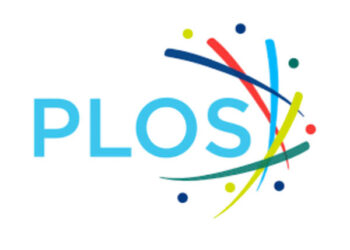
“We need a fresh perspective,” the C-level executive ruminates. “I need to bring in some outsiders.”
This powerful myth — that outside people can see a situation anew and deliver crucial insights — has a strong basis when it comes to outside experts. Advisors and consultants with deep knowledge can provide new insights. But the myth that non-experts can make appropriate and powerful changes to an organization can lead to hiring people who take a long time to train so they have the requisite expertise to operate effectively. The worst case is that an outsider can take an organization down the rat hole.
This myth recently came under scrutiny in a blog post by Erin Griffith on PandoDaily. She recounts the stories of a few tech innovators who humbly credit their insights and success to their naïveté. The myth is that, unencumbered by history and tradition, their insights could flow, unhindered by a bag full of history and hammers around their proverbial windpipes.
As Griffith writes:
The problem is there’s a lot of backstory to these tales of disruption that doesn’t get told. . . . [for one VC firm,] the decision to back a company is just as much about the founder as it is about his or her background and how it led up to that moment.
That is, having an idea is fine, but unless you have a legitimate and deep background that makes your insights plausible, workable, and sustainable, you’re just someone with an idea. Acquisitions are a smart way to bring in expertise and innovation — iTunes was created when Apple acquired SoundJam MP and brought the experts who had created it aboard when they relabeled it iTunes. To succeed as an innovator, you have to have the right kind of experience.
Peter Thiel’s famous question about innovation — “Do you have a secret?” — has a bearing on the issue of innovation. It means, as Griffith writes:
. . . do you know something about this industry, or market, or product, that no one else does?
When Apple bought SoundJam MP, they were buying SoundJam MP’s secret.
Let’s contemplate this for a moment, because it’s pivotal. For you to know something about an industry that nobody else does requires more than just dumb luck, as the recent attempt to inject the former developer of the Apple retail stores into the JCPenney brand revealed. On the surface, a store is a store, retail is retail. But selling high-end, high-demand, and high-design electronics is very different from selling household goods and basic clothing necessities at reasonable prices and in convenient locations. JCPenney shoppers are looking for low prices and complete inventory, as one shopper noted after the failure of the new CEO culminated in his resignation recently:
. . . the J.C. Penney brand, to me, meant that I could find my basic things — t-shirts, jeans, kitchenware and more — in the right size/color, virtually all the time. I don’t want Martha Stewart-looking stuff.
Whatever you need to do, you have to keep the current business going while you are experimenting with your new one. He didn’t do that. What he did was put a bullet hole in his current business and went about trying to create a new one.
The results of bringing in someone from outside the industry for JCPenney were disastrous — $985 million in losses, 25% sales declines, 57% lower stock values, and dissatisfied core customers. They ultimately apologized for the fiasco and brought back their former CEO.
Outsiders can’t know an industry immediately, and bringing in a naïve outsider can usher in the wrong beliefs and skills — in JCPenney’s case, the person they brought in was strong in design and aesthetics, but those were not things that were going to save the retailer. JCPenney rises or falls based on discounting and reliable inventories, not style. They needed someone who understood discounting and distribution well enough to innovate in it.
I’ve experienced this myself in a mild way. Having spent 15 years doing editorial and publishing work in the medical specialties, I moved to a surgical specialty a little over three years ago. There are many obvious and subtle differences between surgery and medicine, including how important research is, how industry and physicians relate, levels of autonomy, how trials are designed, and so forth. My first exercise was to understand the market, so that within six months, I had a strong sense of our customers and their needs. Even with that, it’s been sobering how long it takes to really understand a field.
Another side-effect of the executive belief that “life is elsewhere” is that staff members aren’t utilized in transformational efforts. In the pigeonholing that can take place between HR and executive leaders, staff can be overlooked. After all, these people have job descriptions, roles, responsibilities, and performance evaluations — how could they possibly be relevant to an exciting new initiative or even develop an interesting new idea?
Too often, staff are taken for granted, even though they may have skills, abilities, knowledge, and perspectives that would lead to innovations. I remember searching for a solution for months using outside consultants and endless meetings. Then, one day, talking about the problem with a low-key long-term employee at his cubicle, he made a suggestion that not only solved the problem conceptually but gave me the actual person with the answer. I’ve seen people who I thought only did one thing reveal entire swaths of their careers I never knew about when a new initiative took hold. Some people are doing things as a hobby or personal passion that might matter. It’s hard to know. But looking inside is as likely to work as looking outside. The trick is to avoid the naïf.
Staff have earned their secrets about the industry. They may know something you need to know, or have a point of view that might save your organization thousands of dollars or hours. Don’t forget about them. Don’t let the myth of the naïve innovator seduce you — how could they know any secrets at all? Instead, look to the people closest to you on a daily basis. Build a baseline of shared customer knowledge, then ask them for their insights from there. They know some secrets about the future.
Discussion
10 Thoughts on "True Innovation Requires Knowledge — The Myth of the Naïve Disruptor and the Marginalization of Staff"
As a consutant who moves from industry to industry I want to take on the question how could an outsider know any secrets? The answer is specialized situational knowledge. In my case it is how to resolve complex issues, but there are many situations which have their own needs, needs which are independent of the industry involved. A plumber does not have to know what you do for a living.
But of course this means you have to first know what your problem is, or which way you want to go, which is a step that too often gets missed. Bringing in an outsider solely for transformation’s vague sake is folly.
In the Penny case it is not clear that the CEO made a mistake. When the Board picked an Apple exec they chose to go in the Apple direction. The experiment failed but it was the CEO’s job to conduct it. Do not hire a plumber if you do not want plumbing done. Transformation is always risky.
The mistake at JCPenney was two-fold. First, the board bought into the myth of the naive innovator. Second, that innovator also succumbed to the same myth for the most part. Toward the end, there was some acknowledgement of error on his part (the apology was his idea), but that lack of self-awareness to me suggests he bought into the same myth as the board.
There is a difference between bringing in an outside expert who knows how to do what you need to be done, and bringing in an outsider just for “fresh blood.” And, as I suggest, sometimes the fresh perspective and domain expertise can exist within an organization’s staff. Need a new design approach? Well, you could hire an outside designer, or you could look inside and frame the challenge properly.
I do not see the myth, just a failed attempt at transformation. Do you have any evidence that the Board did not know the direction they were choosing? Outsiders transform companies all the time. It is a radical but relatively common practice. Sometimes they take them down. There is no myth, just risk.
Penney’s board hopes Mr. Johnson “will change how people shop” and attract younger buyers into its stores, Thomas J. Engibous, the board’s independent lead director, said in an interview. While he acknowledged the Apple model won’t translate to Penney’s stores, Mr. Engibous said, “The fact that he has a lot of creative ideas was very appealing to the board.”
The myth of the outsider in spades — we know what he worked on last wasn’t what will work here, but he has a lot of ideas, wow!
The article says he was hired specifically to attempt a remake, by activist investors. That is risk big time, but I see no myth here. Maybe you should explain the myth claim. I might even agree, unless you are claiming that outsiders never help. As a professional outsider I would have a problem with that.
It is fun when I go into an organization. I ask simple questions so the inside experts write me off. What they fail to notice is that my questions become even simpler, because I am looking for deep stuff they do not even know exists.
I was intimately involved in two successful turnarounds. What they had in common was a careful person at the top. A person who first built his/her team from both within and from without and then created an atmosphere where change was acceptable. I should mention that we did not use outside consultants.
I was in two other large organization that did use outside consultants. In one instance, we did all the work and they got paid for doing the obvious. I think that was the result of the CEO not knowing what to do but just doing something to make it seem like he was being proactive for the benefit of the board. In the second, the consultant was tasked with specific goals and they assisted in contributing to the success of the business.
I have been in the position of being both the publishing innovator brought in from the outside and being the one “innovated “upon” (to?) and from such a perspective I can only say “yes, but . . .” in response to your post. As a fresh-blood manager, I have always maintained that he best way to get good performance from your staff is to treat its members respectfully and as if they actually know what they are talking about. At the same time, it is human nature, particularly professional nature to be able to produce elaborate and articulate rationales for “why we do things this way.” And an incisive question or new experiment can often lay bare fallacies in those rationales. So I think that the potentially transformative role of a innovative naif is not a “myth” but a tactic. And, like all effective tactics, it must be tied to an intelligent and well-plotted strategy. And goodness knows, everyone from JC Penney to Amazon to Elsevier needs one of THOSE.
I’m glad you called this the myth of the disrupter and not the myth of the outsider. As Maria, Harvey, and David all note above, outsiders can be very useful and productive if used in the right way. As I tell clients all the time, they know more about their niche than I ever will. I’m never going to be a replacement for their specialized, domain knowledge. What I bring, as an outsider, is a fresh set of eyes, other specialized knowledge base that may not be resident at the client’s organization (e.g. technology, workflows, business process, distribution channels, etc.), and knowledge of how others in adjacent spaces have solved problems that may have bearing on the clients situation. But my knowledge base must be combined with the client’s domain expertise to be truly useful.
The myth of the “disrupter” is different and has its roots in the culture of Silicon Valley. The default position of many companies in the Valley is that whatever way an given industry is currently running is backwards and they, being smart people from the Valley with no industry “baggage” and with superior knowledge of how to arrange 1s and 0s, can find a better way. It is in many ways analogous to the “by scientists for scientists” myth (http://bit.ly/1aEiZTf), which is predicated on the notion that scientists, because they are scientists, are smarter and therefore better at doing things other than science (like running a publishing business) than people who do that thing for a living. Just replace “scientist” with “software developer” and it is the same premise.
This mindset can be useful in certain circumstances as it does lead to organizations trying things that fly in the face of conventional wisdom or that disrupt entrenched interests — and once in a while those things are successful. But it can also lead to debacles like that of JC Penny.
But the myth of the disrupter is, to my mind, a very specific tech industry phenomenon propagated largely for the purposes of prying funds from venture capitalists (though many believe their own propaganda) and is not related to using consultants or other outsiders. But of course I’m a consultant so I would say that…
The challenge is to balance the “fresh” perspective with the deep knowledge that inevitably exists within every organization (as nicely stated by Maria). Often, legacy employees have never been challenged to leverage their knowledge for the future direction of the organization. If you can do that, while counterbalancing the effort with a new perspective that is not completely misinformed or misguided, you have a chance at transformative change, inspired new-product development, and (ultimately) happier customers.
I have to agree with Michael’s distinction between the disrupter and the outsider. Ideas that hold the promise of disruption can come from anywhere, but to actually disrupt implies (requires?) the power to act…implement. The decision to act on a potentially disruptive idea then comes down to to leadership decisions and risk assessment. You talk about the marginalization of staff, and that can be an issue, but my fear is the marginalization of potentially innovative/disruptive idea(s) based solely on the fact that it/they come from the “outside.”



